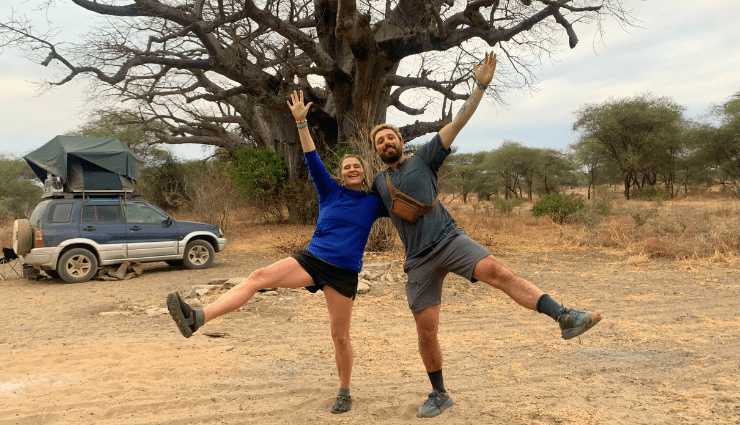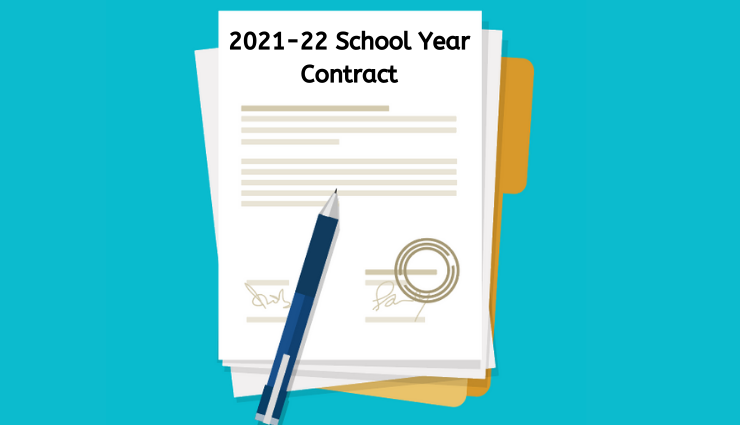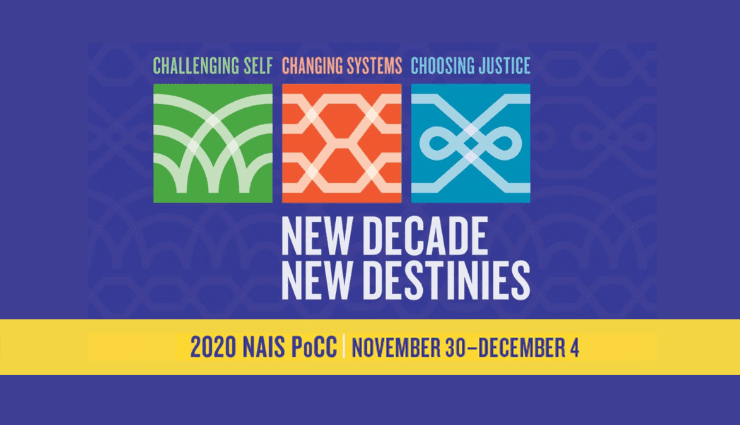Making the Transition to Online Teaching and Learning

When the work of running schools is upended by a coronavirus pandemic, it’s nearly impossible to find anything close to a silver lining. The best one can say is that at least we have the option of shifting from in-person to distance learning today — so we can keep our children both safe and engaged.
That said, now that schools are making a full-scale and sudden shift to online teaching and learning — collectively, we’re just over a month in to the process — the challenges of doing this work are coming clear. To better understand how schools can support educators as educators support students in this new landscape, we recently spoke with Brad Rathgeber and Corinne Dedini, the head of school and assistant head of school at One Schoolhouse, a fully accredited online independent school, to get their insights into what schools should focus on during this transitional period.
One Schoolhouse began in 2009 as the Online School for Girls, one of the earliest and most successful online programs for independent school students. Over this past decade, the program has been offering an expanding list of courses while steadily improving online teaching and learning based on the growing body of research about how children learn. One Schoolhouse today offers more than 60 courses annually, engaging students from more than 145 schools. Perhaps more important, the program has been highly attentive to how to use the online format to its fullest advantage and how to train teachers to work effectively in this sphere.
So, what can schools can do to support teachers in this strange new world?
To start, focus on “distance learning,” not “online learning.”
“Right now, we’re advising schools differently that we typically do,” says Rathgeber. “This current situation, this sudden rush for every teacher in every school to teach every student online, to put it mildly, is very odd and stressful. So we’re encouraging schools to keep the process as simple as possible — focus on distance learning, not on creating online learning programs.”
“Distance learning,” Rathgeber says, involves educators taking the essential approach to teaching and learning they use in the classroom and finding a remote equivalent. “Online learning,” is a more complex process that views time and space differently and takes advantage of a range of education technology. In essence, online learning, when done well, involves schools developing a whole new approach to teaching and learning. “You don’t pivot to these latter practices overnight,” Rathgeber says. “In fact, we take around six months to train each teacher for our program.”
Keeping the process simple also keeps it manageable. Because this pandemic is stressful in the extreme for everyone, Dedini says, “this is not a time ask teachers to change any more than they have to. It’s also not a good time to expect students to adapt to a whole new way of learning. At the moment, it’s best to focus as much as possible on connections with students.”
Offer teachers a variety of ways to get support or help as needed.
Schools need to remember that few, if any, of their teachers signed up for the current arrangement. Teachers love working directly with students and connecting daily with colleagues. They feel most comfortable in their actual classrooms. The kind of isolation they find themselves in now is more than disorienting. As with their students, creating a sense of connection among teachers goes a long way.
To support teachers in this new landscape, Rathgeber and Dedini say, schools need to let teachers know where they can turn for help or support — be it for technology troubleshooting, to get curricular advice, or just to prevent a meltdown. One Schoolhouse has an open calendar where teachers can sign up to speak with administrators. “I rarely go a week without a teacher putting 30 minutes on my calendar to talk about something they need help with,” says Dedini. “Other One Schoolhouse administrators have even more regular meetings with teachers. Creating an easy way for teachers to interact with us is so important right now. I don’t think there’s ever been a time when teachers have felt so alone and vulnerable.”
Create a virtual faculty room.
Dedini and Rathgeber also recommend that schools create a virtual faculty room where teachers can engage with each other on a discussion board. This enables teachers to have an ongoing, asynchronous virtual conversation around challenges they encounter and how they are working through it. Having an administrator moderate the discussion board can also help school leaders better understand the challenges that are arising in this online, distance-learning format. Such knowledge gives them the ability to enter the conversation as needed.
Offer opportunities for teachers to de-stress.
“At the moment,” Dedini adds, “we’re also holding a weekly cocktail hour for our teachers. It has been a great way to connect and support each other and vent as needed.” Other schools are offering online yoga classes for teachers. It’s also helpful for teachers to meet virtually by departments or divisions to compare notes and support each other.
Survey students to gauge their experiences in the new landscape.
Another useful means for supporting teachers, Rathgeber and Dedini say, is to survey students — as a way to better understand their experience in individual classes. The point is not to use the survey as a teacher accountability tool. At One Schoolhouse, all the raw survey responses are shared with the teachers. The goal is to identify what is going well in a class and work together to address what needs to improve. “It’s a quick and effective way to troubleshoot,” says Dedini. She recommends checking in with students now — and following up closer to the end of the term. Given the likelihood that some form of distance learning could occur in the fall, it will be helpful to have this data now for future planning.
Offer teacher help managing the online space.
With lower schools, the concept of a synchronous Zoom class is a particular challenge. For these reasons, Rathgeber and Dedini encourage schools to assign specialty teachers to assist elementary school teachers as needed. “If you get a bunch of seven-year-olds on a Zoom call,” Rathgeber says, “you’re going to need someone who is managing the Zoom conversation and someone who is managing the content conversation. So you literally need a teaching assistant to oversee what’s going on on the screen.”
What Teachers Can Do to Support Students
Independent schools are designed around close relationships between students and teacher. Rathgeber and Dedini encourage schools to also keep this relationship at the core of the virtual classroom.
Focus on good relationships with all students.
“In truth,” says Rathgeber, “we believe schools can be much more intentional about what they think a good relationship with students looks like. Without a broader conversation, teachers can hold a wide range of views on what this means.”
For now, however, they encourage teachers to balance out academics with plenty of focus on student social-emotional health and building life skills. This is such a highly unusual time, and more than anything students need to know they are physically and emotionally safe. Parallel to safety is keeping students engaged in learning.
The question of engagement is one of the great challenges of online and distance learning in the best of times. It’s far more difficult under the current levels of stress and given the complexity of many students’ lives at the moment. Some news reports recently suggest that as many as 40% of students nationally are not currently attending school. For some, it’s a matter of necessity — if, say, they have to care for younger siblings while parents work. For some, it’s a lack of access to the Internet. Beyond that, students often either feel uncomfortable with the virtual arrangement or get easily distracted.
“The key is be as attentive as possible to each and every student,” Dedini says. “Students need to feel they are both known and cared for by their teachers.”
Keep to your original class schedule as much as possible.
Dedini and Rathgeber are both concerned about schools that are embracing an asynchronous system in which students learn on their own and report back. The essential problem is that it’s too easy for students to check out or get lost in the shuffle, because most schools have not trained their faculty in asynchronous learning pedagogy. “We encourage schools to stick to their bell schedule as much as possible,” Dedini says. “Even if you’ve decided not to teach at that time, it’s good to show up and connect with students, let them know you are thinking about them and you are available to them.”
Dedini notes that, with a professional development program she runs for teachers, she uses a practice of “Thorns and Roses.” “We ask everyone in the class to reflect on what makes them uncomfortable (the thorns) and what is going well (the rose). We can also do this with students now to leverage the rose and address the thorn. When we have these conversations, students quickly understand that by coming to class they will get help and support.”
Focus more on self-management skills.
Rathgeber and Dedini also suggest that teachers spend time working with students on self-management skills. Schools are finding out that many students, left to their own devices, can’t organize their time effectively. Teachers who are attentive to this problem — and who are in regular contact with students — can help identify students who are struggling or need to catch up on assignments.
A parallel practice in the online world is for teachers to be very clear with their expectations and offer step-by-step instructions around every assignment. It’s equally important to get back to students quickly with evaluations and grading.
If teachers find that a high percentage of students are struggling, it’s also an indication that the teachers should back off a bit on their demands on student time. Academic rigor has its place. But in the current landscape, offering students support and care and helping them manage their lives well is more important.
What Comes Next?
Epidemics and pandemics have been part of human history from the start. With COVID-19, we’ve come up against the worst kind of virus — one that is highly contagious and deadly, and one for which we’re months away from having a vaccine. All of this means we are living with a great deal of uncertainty for the coming months.
The primary goal at the moment is to support each other well until we reach the other shore. But Rathgeber and Dedini also encourage school leaders to use this time to begin having conversations about what works best in education and how it applies in a virtual classroom — should the shore stretch past this summer into fall.
Over a decade of running online programs, One Schoolhouse has learned a great deal about how to run successful online classes that take full advantage of both the technology and quality pedagogy. From the beginning, the One Schoolhouse team has invested a great deal of time developing rigorous metrics by which it can measure programmatic outcomes — particularly the metacognitive elements of learning.
The result of this work has helped shape and hone One Schoolhouse’s view of quality teaching and learning. Today, its courses all focus on:
- building strong relationships with all students;
- encouraging student-driven learning;
- clarifying outcomes and competencies;
- encouraging mastery learning;
- focusing on both formative and summative assessments;
- balancing subject knowledge with social-emotional and academic skills; and
- seeing teachers more as coaches than keepers of knowledge.
One Schoolhouse also has a highly skilled instructional coach to support teachers throughout the year.
This list of pedagogical elements is a helpful reminder of what matters most in education — and what the goal of high-quality, student-centered programs should be.
This coronavirus has upended life as we know, and will no doubt have ramifications for how we rebuild our economies and cultures moving forward. For educators, the short-term goal is to support students with as much care as we can offer. But it’s also a good time to think more deeply about what we want our schools to look like in the years to come.








